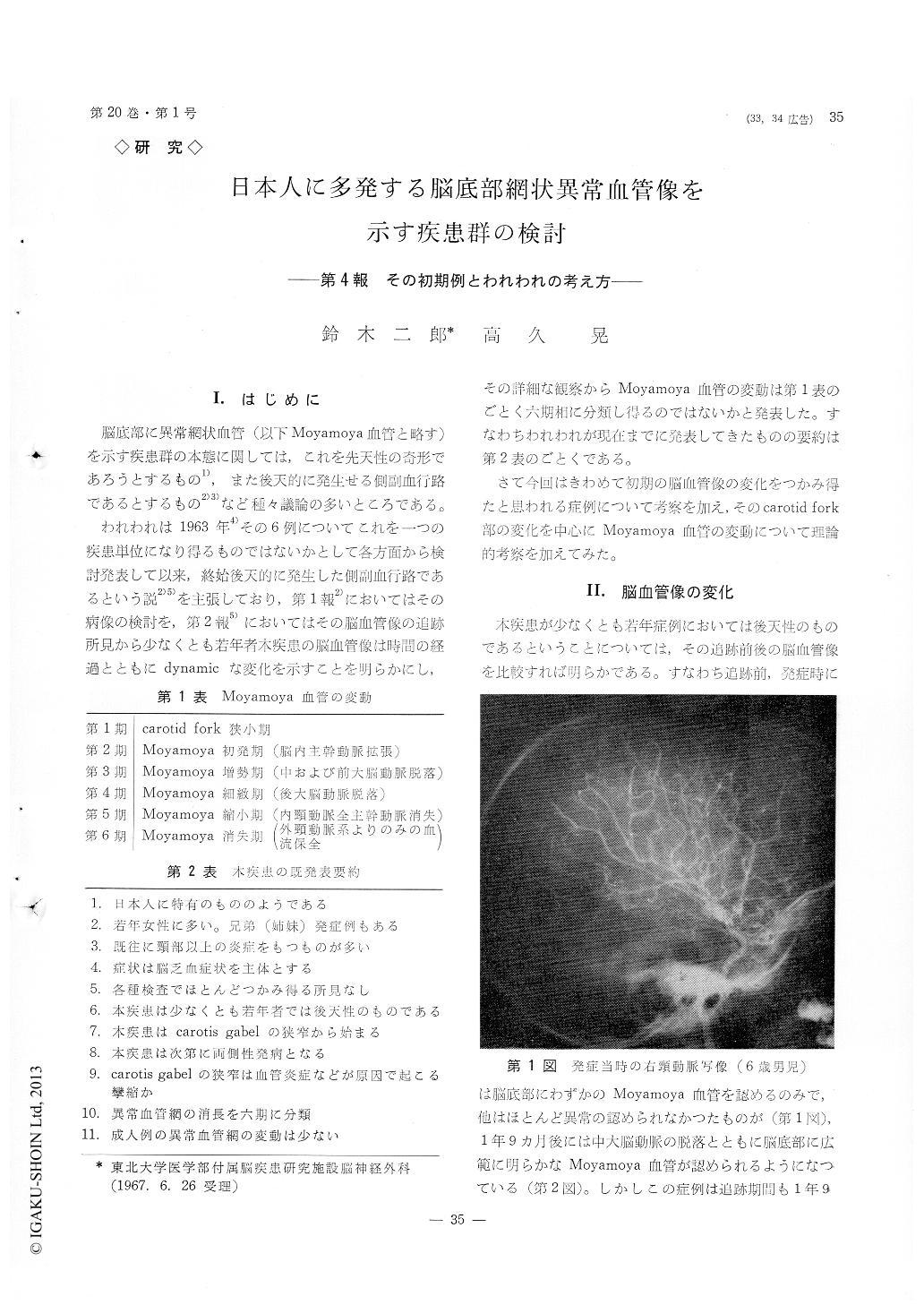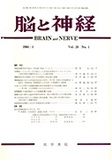Japanese
English
- 有料閲覧
- Abstract 文献概要
- 1ページ目 Look Inside
I.はじめに
脳底部に異常網状血管(以下Moyamoya血管と略す)を示す疾患群の本態に関しては,これを先天性の奇形であろうとするもの1),また後天的に発生せる側副血行路であるとするもの2)3)など種々議論の多いところである。
われわれは1963年4)その6例についてこれを一つの疾患単位になり得るものではないかとして各方面から検討発表して以来,終始後天的に発生した側副血行路であるという説2)5)を主張しており,第1報2)においてはその病像の検討を,第2報5)においてはその脳血管像の追跡所見から少なくとも若年者本疾患の脳血管像は時間の経過とともにdynamicな変化を示すことを明らかにし,その詳細な観察からMoyamoya血管の変動は第1表のごとく六期相に分類し得るのではないかと発表した。すなわちわれわれが現在までに発表してきたものの要約は第2表のごとくである。
In our previous reports we supported this disease as follows this is not a congenital malformation but is an acquired disese. In this disease the stenosis or the occlusion will occur at the carotid fork at first and the abnormal net-work, we call it "Moyamoya", will develop as collateral pathways secondarily. It was also reported that finally the remarkable changes of "Mayamoya" will Develop bilaterally, though there might be a chronological differences in the appearance of Moyamoya between on the right side and on the left from the follow up study of ca-rotidangiography of four young patients.
Then we classified the developmental process of "Moyamoya" angiographically into six phasis from the sixty films of the follow up study, as follows ;
1 st phase, Stenosis of the carotid fork
2 nd phase, First appearance of " Moyamoya " :Dilatation of cerebral arteries,
3 rd phase, Increasing of "Moyamoya" (Disap-pearing process of middle and anterior cere-bral arteries)
4 th phase, Finer formation of "Moyamoya" Disappearing process of posterior cerebral artery,
5 th phase, Shrinking of "Moyamoya" (Disap-pearing process of the cerebral main arteries)
6 th phase, Disapppearance of "Moyamoya" (Preservation of cerebral circulation only through external carotid artery and the vertebro-basilar system)
On this report, the above-mentioned classification was theorized on the basis of the hypothesis that the stenosis or the occlusion at the carotid fork would develop gradually towards the distal portion of A1, M1 and the proximal portion of C1.
The "Moyamoya"" consisting of the perforating branches at the carotid fork region, as the collateral pathways to the distal portion of the occluded point on the middle and anterior cerebral artery, would show the dynamic noticeable change by this hypoth-esis.

Copyright © 1968, Igaku-Shoin Ltd. All rights reserved.


